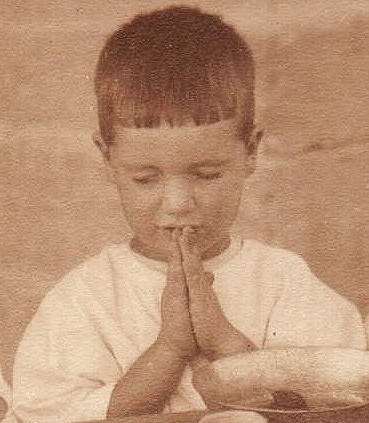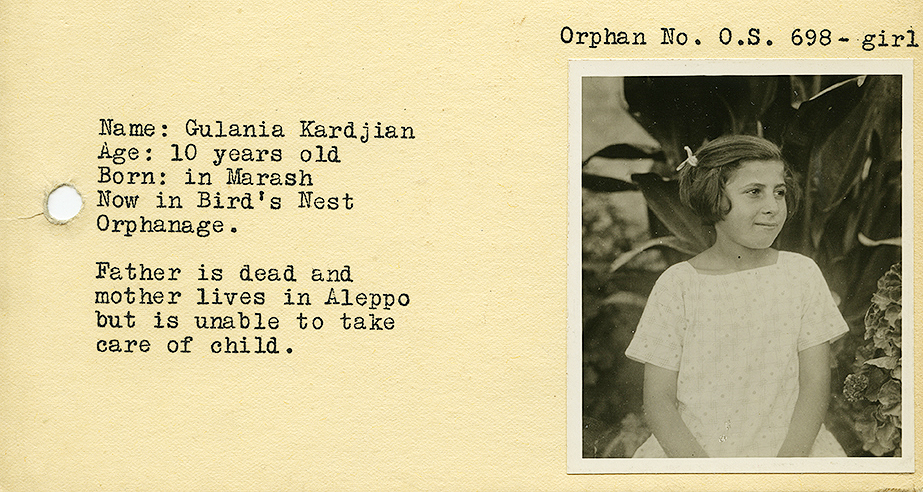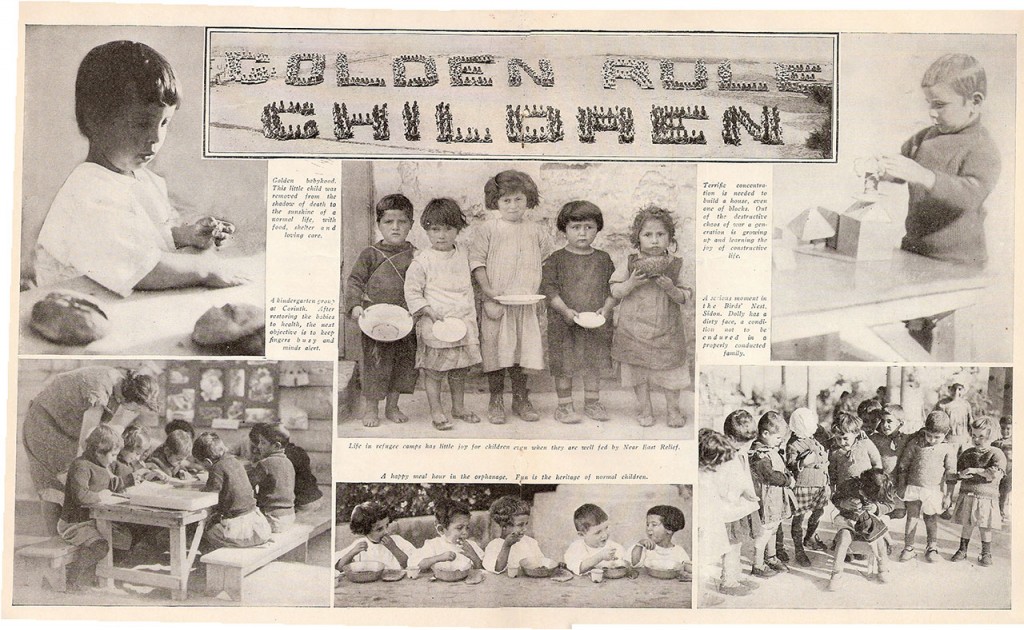In a Little Boy’s Face: One Family’s Story of Survival and Discovery
For brave families like the Karjians, survival was only the beginning.
Searching for Antranig
In 2014, a woman named Lucine Karjian contacted the Near East Foundation. Her father Antranig had recently passed away at the age of 94. Many years before, Antranig had shared a very special photograph with his daughters. It was the only photograph that he had from his time in a Near East Relief orphanage. Lucine was seeking information on the photograph.
We receive many inquiries from the descendants of Near East Relief orphans. Some of them are lucky enough to have photographs from a Near East Relief orphanage. Most of these photographs do not have any identifying information. Many survivors of the Armenian Genocide did not feel comfortable sharing their stories with their children and grandchildren, and did not record their memories. We often hear from people who have found an interesting photograph that their loved one never spoke about when he or she was alive. Usually, we are only able to offer an educated guess as to where and when the picture was taken.

Little did Lucine know that her photograph was the proverbial needle in a haystack.
David Mann, son of Near East Relief worker Nellie Miller Mann, had published his mother’s letters and photographs in a book called Letters From Syria, 1921-1923: A Response to the Armenian Tragedy, Including Stories, Travel and Reports in 2013. Mr. Mann had also shared these wonderful historical materials with the NEF archives. Lucine’s photograph was identical to a photo from the Nellie Miller Mann Collection.
A few months later, Lucine was watching a NERHS Kickstarter video about a collection of a few orphan photos, complete with names and some identifying information, in our Archives. We have almost no information on specific orphans. Lucine was astonished to recognize “Orphan No. O.S. 698 – girl – Gulania Kardjian.” The little girl was her Aunt Vartouhi. It seemed like fate.
When NERHS partnered with The Genocide Education Project and other experts to produce a teachers’ guide on Near East Relief, we knew that a personal story would make the guide even more compelling. I (Molly) had the pleasure of working with Lucine Karjian to write a brief account of her family’s history to that others might learn and be inspired by this amazing story. This Dispatch is adapted from the story featured in They Shall Not Perish: The Story of Near East Relief curriculum. You can download the full curriculum as a PDF from our Education page, or by clicking here.
At left: closeup of Antranig Karjian from a photograph taken at the Birds’ Nest orphanage, c. 1925. Nellie Miller Mann Collection.

Nellie Miller's photograph of children saying grace at the Birds' Nest orphanage in Sidon, Syria (now Lebanon), c. 1925. Antranig Karjian (second from the right) gave the same photo to his daughters.
Struggling to Survive
Like thousands of Armenians, Lucia Elmjian Karjian was deported from Marash, Turkey in 1915. Her husband Garabed had previously been sent to Syria. Lucia marched with her four-year-old son, Manase, and her one-year-old daughter, Vartouhi. They traveled hundreds of miles on foot. Lucia and her children eventually found safety in Damascus, Syria. Miraculously, Lucia and Garabed found one another in Damascus.
The reunited family’s happiness was short-lived. The young and beautiful Lucia soon caught the eye of a Turkish gendarme. The gendarme killed Garabed and took Lucia and her children as his captives. At the time of her husband’s death, Lucia was expecting her third child. She gave birth to a son on a snowy winter night in 1920. Lucia named her new baby Antranig.
Lucia and her three children were prisoner’s in the gendarme’s home for several years. She finally escaped the house and left Damascus with the children. They fled to the far-off city of Aleppo. With the help of the Armenian Presbyterian Church, Lucia was able to find one of her cousins in Aleppo. Lucia soon realized that she could not support her family on her own. The Reverend Aharon Jirejian gave Lucia a small amount of money and a letter of introduction to the Birds’ Nest, a Near East Relief orphanage in Sidon*, Syria (now Lebanon). It was not uncommon for widowed women to place their children in Near East Relief orphanages while they tried to start a new life for their families. With a heavy heart, Lucia embarked upon another long journey. She took her two younger children to Sidon — nearly 200 miles from Aleppo.
* The Birds’ Nest moved from Sidon to Jubeil in 1928.

Vartouhi (Gulania) Karjian's entry from a rare archival booklet with orphan photos and personal information, c. 1924.
Separation and Reunion
Vartouhi (who was also called Gulania) and Antranig came under the care of Danish missionary and Near East Relief worker Maria Jacobsen and her staff of relief workers. Jacobsen referred to her young charges as “birdies” because they reminded her of baby birds asking for food. Nellie Miller Mann, a Near East Relief worker in Beirut, traveled to the Birds’ Nest often. She loved the children and took many photographs of them. One of the pictures of Antranig and his young friends sitting at a dining table was featured in a New Near East magazine spread on Golden Rule children. (Image at left courtesy of Vicken Babkenian.)
Lucia secured a job as a maid in Aleppo. She saved her meager wages with the goal of reuniting her family. Lucia was finally able to bring Antranig and Vartouhi home to Aleppo in 1926 or 1927, after about two years at the Birds’ Nest. Vartouhi went to work at a tailor’s shop. Antranig attended the Armenian Presbyterian school. Manase enlisted in the French Army and left Syria. Before Antranig left Sidon, an Armenian teacher at the Birds’ Nest presented him with a photograph of Antranig saying grace with other children as a souvenir. This became Antranig’s only tangible memento from his time in the orphanage. He would keep it for the rest of his life.
The Karjian family moved to Baghdad, Iraq, a few years later when Vartouhi married an Armenian refugee from Erzerum; he had also survived the Genocide. As an adult, Antranig immigrated to the United States with his wife and four daughters. He ran a successful photo studio for many years. Antranig rarely spoke of his time in the orphanage, but he was known to sing “Silent Night” in Armenian at Christmas time.
Antranig had learned the Christmas carol at the Birds’ Nest.
Special thanks to the Karjian family for sharing this story.

A New Near East magazine spread, 1926. Antranig and his young friends are at the bottom center. Image courtesy of Vicken Babkenian.
